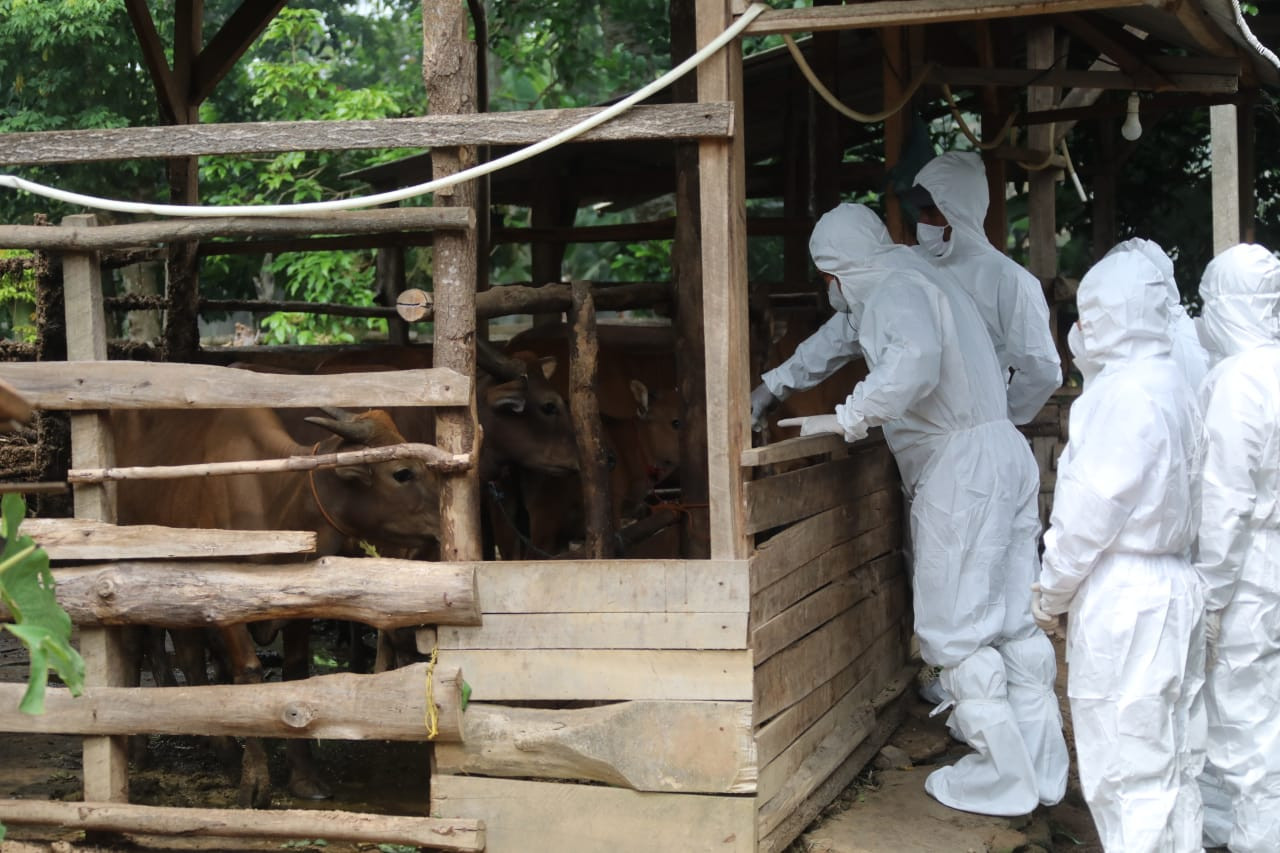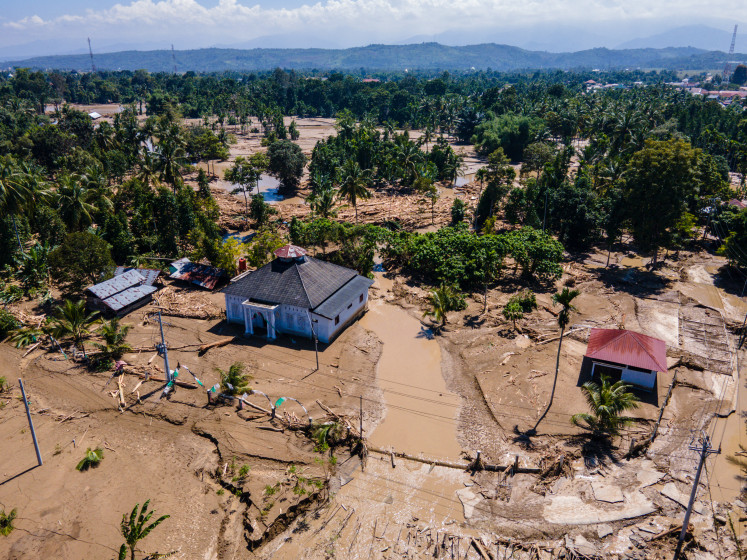Popular Reads
Top Results
Can't find what you're looking for?
View all search resultsPopular Reads
Top Results
Can't find what you're looking for?
View all search resultsFMD to cost economy estimated $1.37b a year
Govt strives to keep disease out of ‘green’ areas.
Change text size
Gift Premium Articles
to Anyone
T
he foot-and-mouth disease outbreak in Indonesia is expected to cause approximately US$1.37 billion in annual losses to the national economy.
Rochadi Tawaf, who sits on the expert council of the Indonesian Cattle and Buffalo Breeders Association (PPSKI), referred to an analysis conducted by his team back in 2014, which estimated that a hypothetical outbreak of FMD in Indonesia at the time would have caused annual losses of $1 billion as a result of livestock movement restrictions, decreased livestock productivity and measures to stamp out the disease.
Based on that analysis he estimated the potential losses from the current outbreak at $1.37 billion a year.
“That number does not include the national economic losses from importing countries halting purchases of [livestock and livestock derivatives] from Indonesia,” he told The Jakarta Post on Friday, adding that some Australian veterinarians had suggested the Australian government restrict Australian tourist visits to Bali to prevent FMD from entering the country.
Should FMD be found in Bali, the risk of Australian tourists getting in contact with infected animals was very high, and this could see the disease enter Australia, Australian vet Ross Ainsworth warned on May 13, as reported by ABC News. The Cattle Council estimated that an FMD outbreak in Australia would cost the livestock sector around $100 billion.
Ira Firgorita, the Agriculture Ministry’s animal health director, said on Tuesday that Australia and Malaysia had temporarily stopped livestock imports from Indonesia, without specifying the reason.
“[FMD] can cause a reduction in meat and milk production, as well as [livestock] deaths,” she said in a webinar hosted by Indonesia’s Chamber of Commerce and Industry (Kadin) on Tuesday.
Read also: Farmers fear for meat production as foot-and-mouth disease spreads
Nasrullah, the Agriculture Ministry’s livestock and animal health director-general, said that, as of May 22, FMD had spread to 16 provinces, with Riau Islands being the latest added to the list.
Nasrullah said on Wednesday that 20,723 animals had been infected, 0.38 percent of the total of 5.4 million livestock in the 16 provinces.
The number is up 32 percent from 13,965 infected animals logged up until May 17, according to data presented by Agriculture Minister Syahrul Yasin Limpo in a hearing with House of Representatives Commission IV, which oversees agriculture, on May 23.
“The government is trying to reduce the number of infected [livestock] and the spread of the [FMD virus] by restricting livestock movement from the infected areas,” he said in a statement on Wednesday.
Nasrullah said between 33 and 50 percent of infected livestock had recovered and that the zoning strategy for localizing cases had effectively halted the spread of the viral disease.
Read also: Indonesia halts beef imports amid India's 'second coronavirus wave'
The Agriculture Ministry has asked local administrations to make full use of animal health centers (Puskeswan) in subdistricts in a bid to suppress the spread of FMD.
“I believe Puskeswan will be able to provide optimal animal health services to improve the quality of animal and livestock health, so that the FMD [outbreak] can be immediately resolved,” he said in a separate statement, also on Wednesday.
Rochadi suggested the government enforce small-scale lockdowns, or compartments, to enable livestock distribution with strict security measures from veterinary authorities.
“The lockdown system implemented must be suitable in view of the [specific] conditions, so that the [regulation] does not interfere with business [activities] in the area,” Rochadi said.
He went on to say that the government should consider culling all infected animals on premises and disposing of them by burning or burying the carcasses. However, conducting such an operation would not be cheap, according to PPSKI chairman Nanang Purus, who explained that the government would be required to spend an estimated $1,376 per head of cattle in compensation.
Pebi Purwo Suseno, the Agriculture Ministry’s senior veterinary officer, said culling could only be carried out in areas where the disease was not yet widespread. When the Agriculture Ministry discovered cases in Aceh and four regions of East Java, infections were already spreading, making it difficult to cull all infected livestock in view of financial limitations.
“We will try to stamp out [the disease by culling infected animals] in green zones in the eastern part of Indonesia. As for red zones, vaccination is the best option we have for now,” he said in a webinar hosted by IPB University on Friday.
“The biggest challenge now is for [the government] to save green zones before [the virus] spreads there too,” said veterinarian Hatri Latif, also on Friday.










